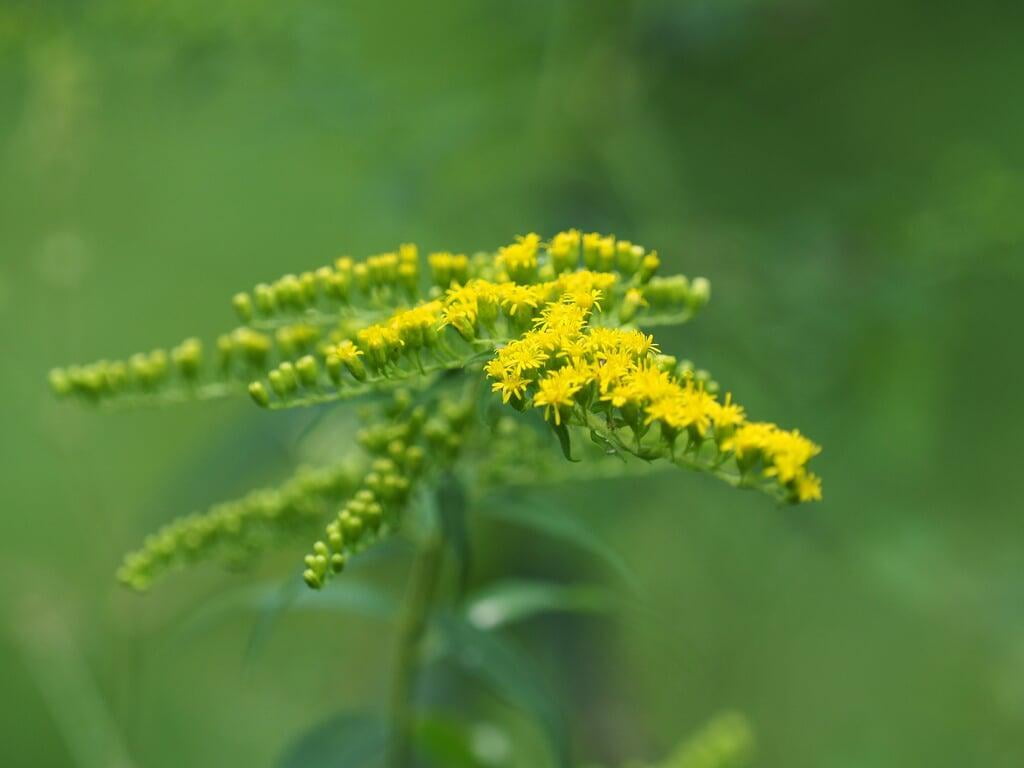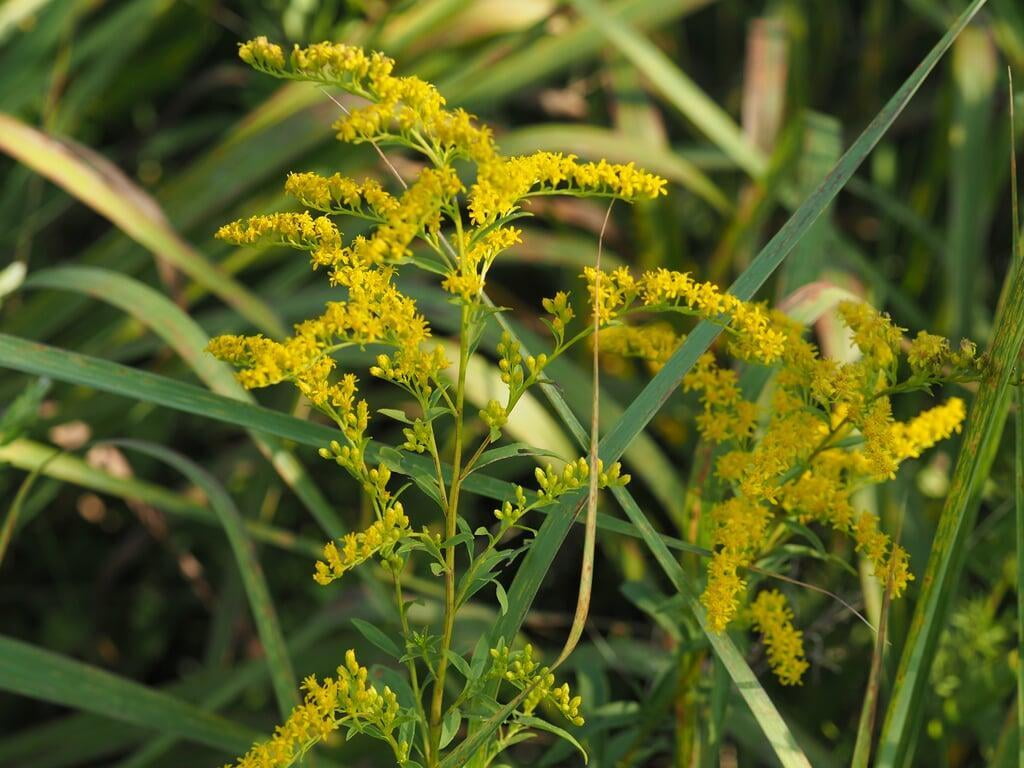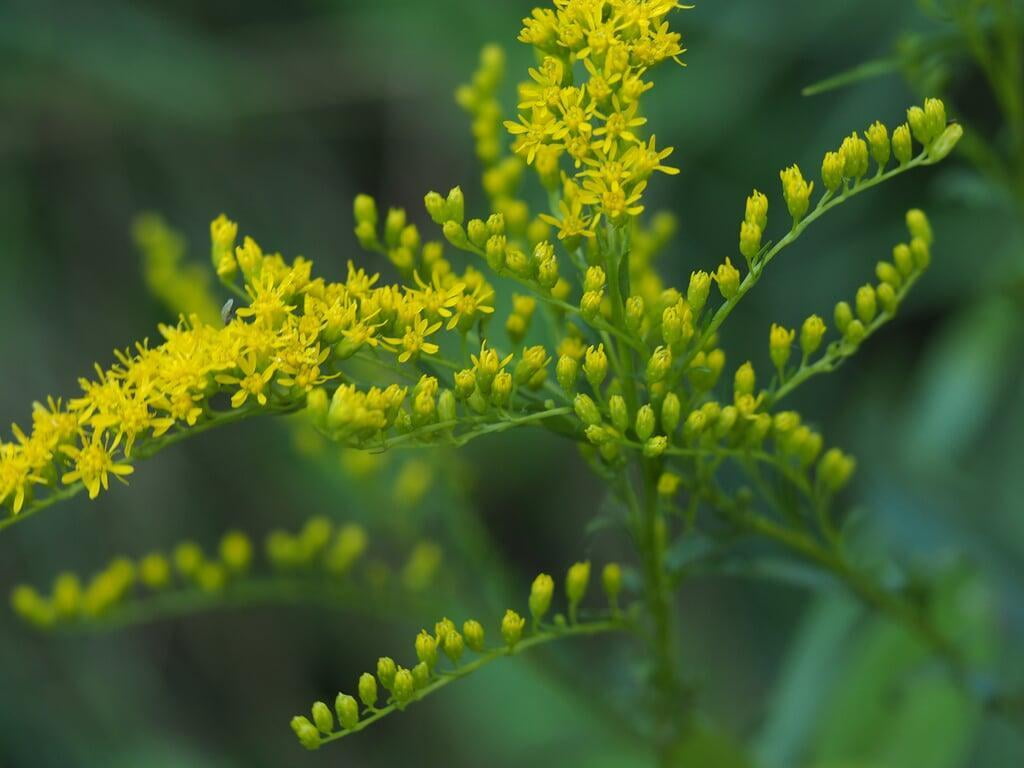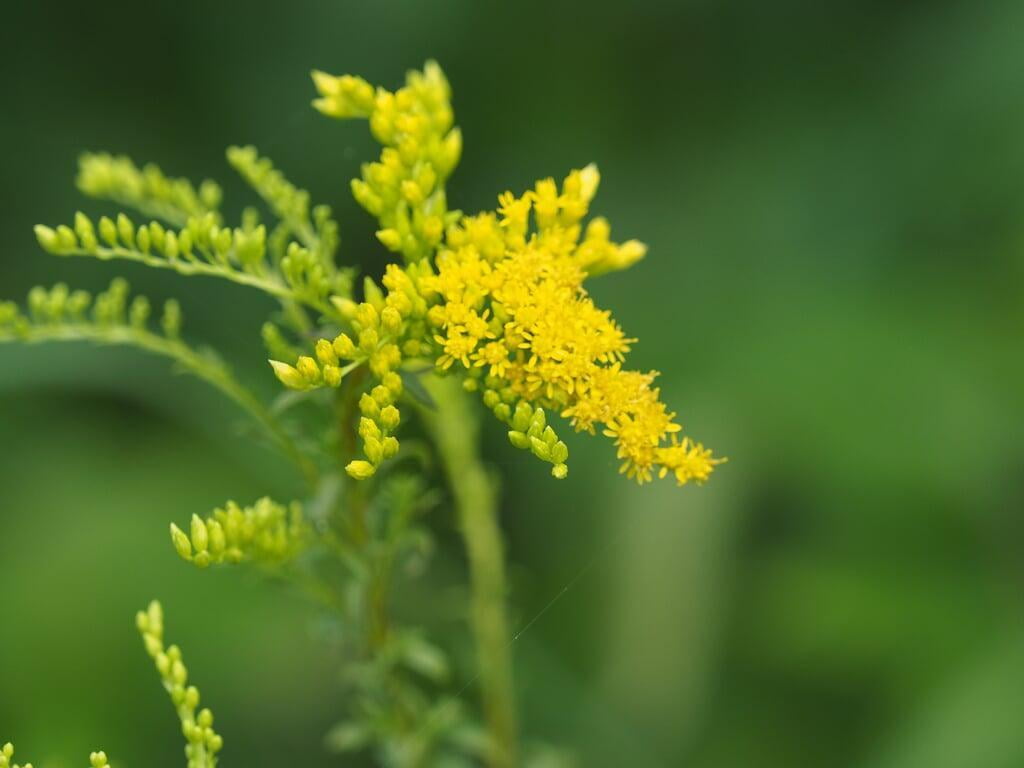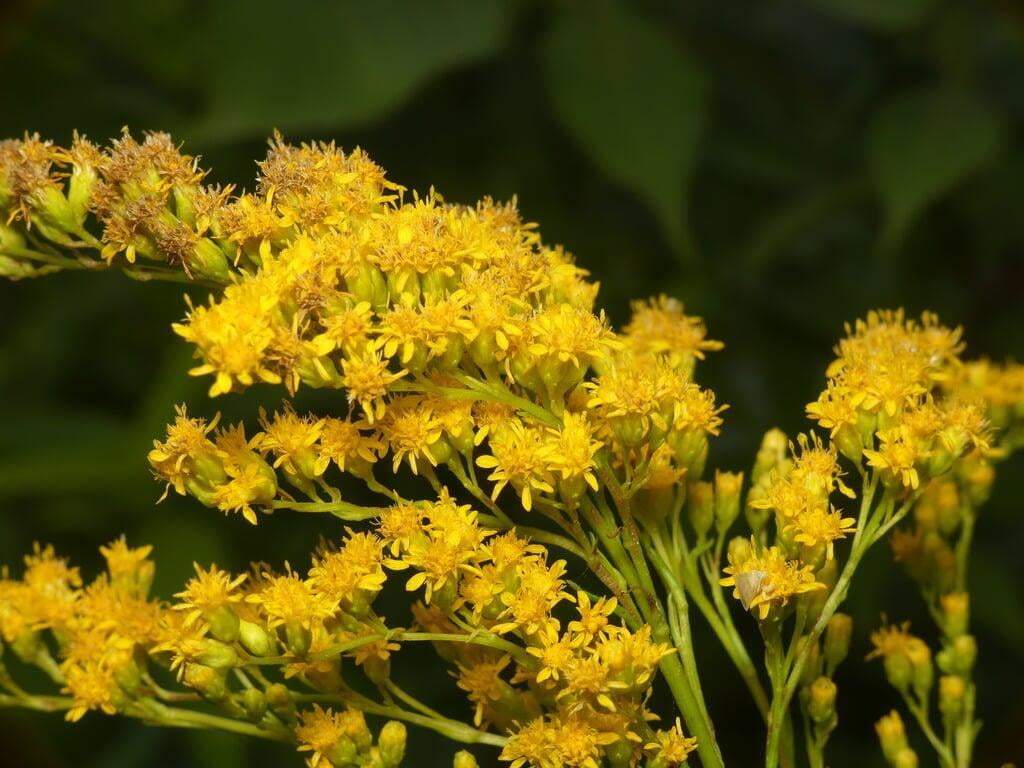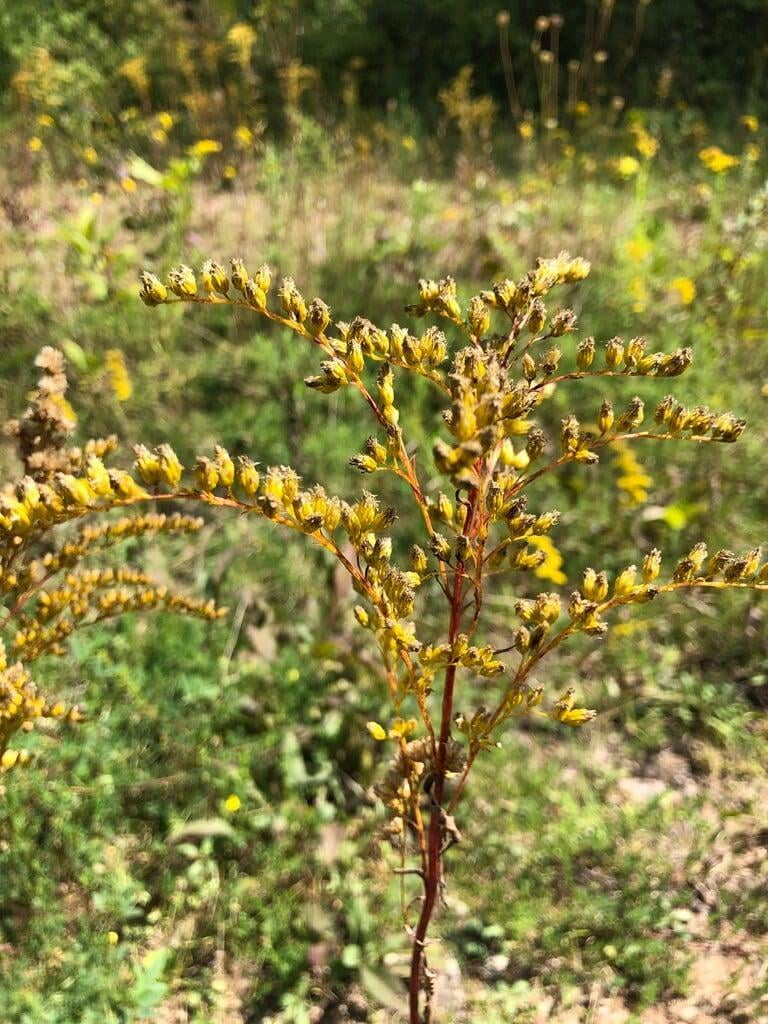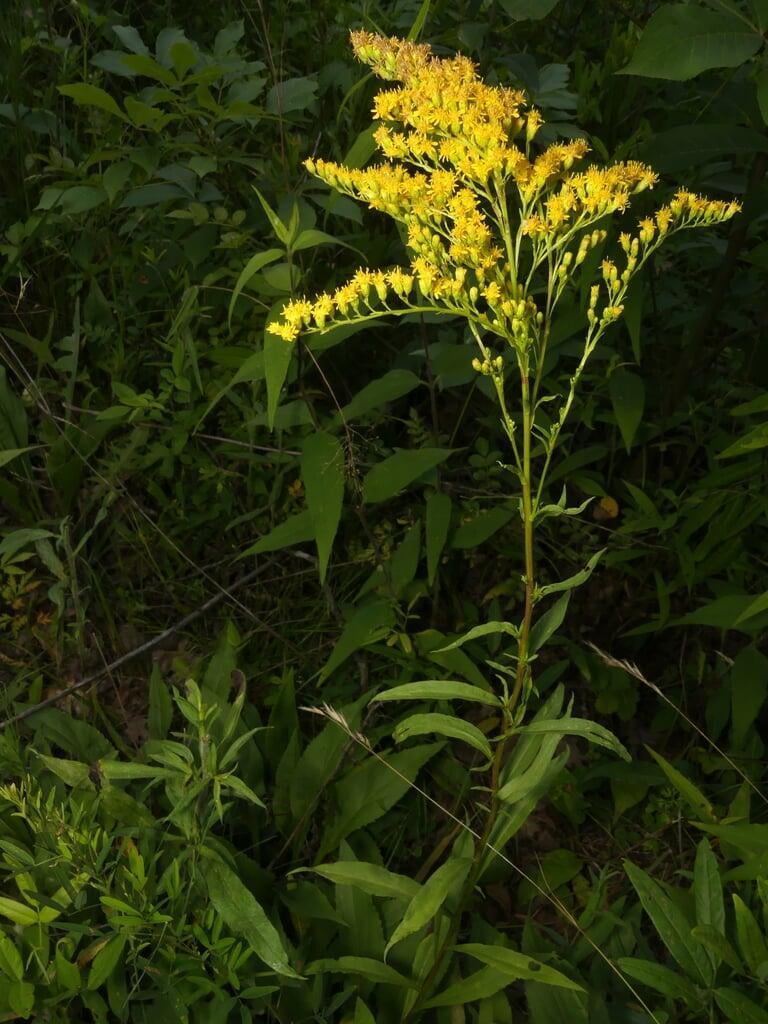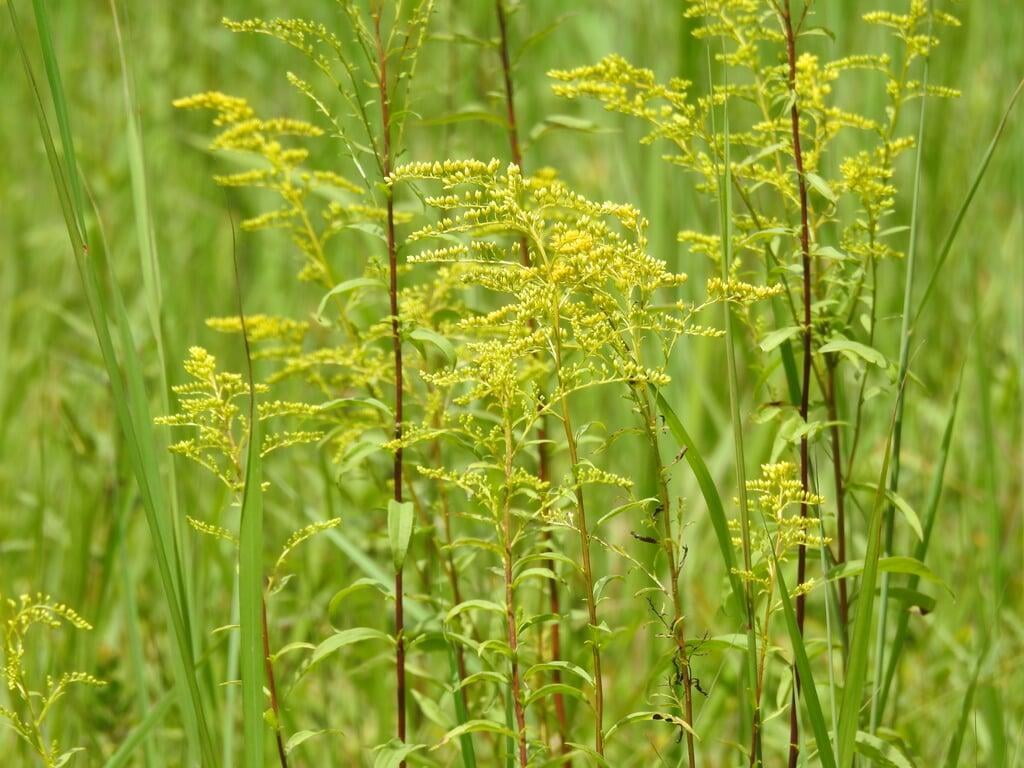Solidago juncea
Early goldenrod Description:
Solidago juncea, commonly known as early goldenrod or yellow goldenrod, is a native North American wildflower species that belongs to the Asteraceae family. This perennial plant is known for its showy and brightly colored golden-yellow flowers that bloom in late summer and early fall, adding a burst of color to gardens and prairies. The plant grows up to 4 feet tall and has a spreading habit, forming dense clumps that can be used for naturalizing areas. Solidago juncea prefers well-drained soils and full sun to partial shade, making it an excellent addition to pollinator gardens, wildlife habitats, and prairie gardens.
Apart from its ornamental value, Solidago juncea has a significant ecological value, as it provides food and habitat for various species of wildlife, including bees, butterflies, and birds. The plant's nectar and pollen attract a wide range of pollinators, making it a vital species in pollinator conservation efforts. Additionally, Solidago juncea has medicinal properties, with Native Americans using the plant to treat various ailments, including kidney and urinary tract disorders. The plant's leaves and flowers are also used in traditional medicine to treat digestive issues, fever, and other ailments. Overall, Solidago juncea is a valuable and versatile plant species that adds beauty and ecological value to gardens, prairies, and natural areas.
Native Range:
Early goldenrod is found in the cetral to eastern United States. It is more common in the north, but can be found as far south as Georgia. In Minnesota, Early goldenrod is found in central and Northern regions of the state.
Standard Plant Information:
Plant Height: 1.5' - 4'
Bloom Time: June - September
Preferred Habitat: Does well in part shade to full sun. Often found in dry prairies and open woods.
Sowing:
For most homeowners, the best option is to scatter seed on the ground by hand broadcasting at a minimum of 16-64 pls ounces per acre. For even coverage, we recommend that you broadcast seed in perpendicular rows across the site to ensure even coverage.
You’ll want to broadcast any grass seed first, which will get raked into the soil lightly. Next, it is ideal to mulch the area lightly with either a clean (no seed) straw or preferably with our native Little Bluestem straw, sold at our retail garden centers. After a light mulching is complete, now it’s time to broadcast your native wildflower seeds, which should not be raked into the soil. A good rain or watering is sufficient to cover the seed.
Planting:
Simply dig a hole in the soil slightly larger than the plant’s roots. Ensure that the soil line of the plant is maintained during the transfer (i.e. the plant should be at the same level with the ground as it was in the pot). Pack any loose dirt back around the plant and make sure you water it well the same day to ensure it has the best chance of survival.
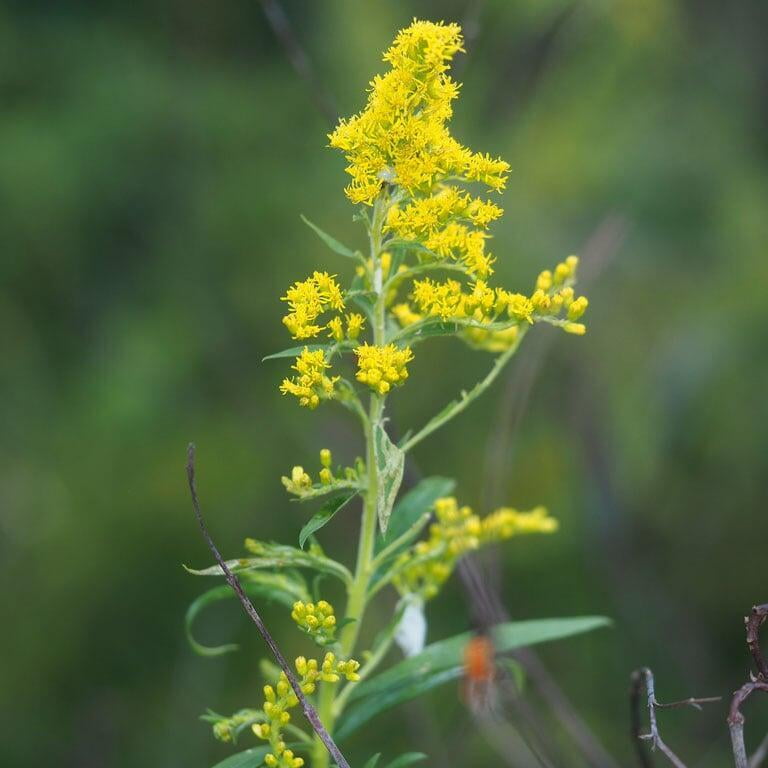
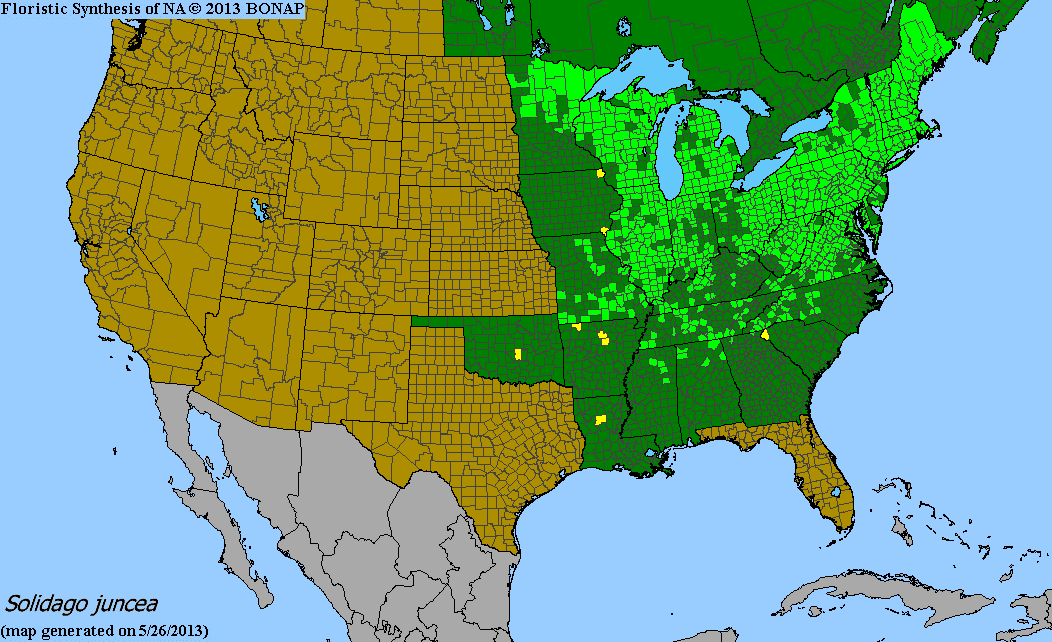
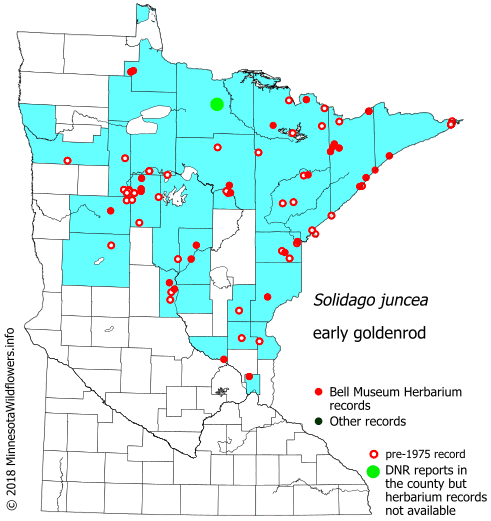
maps used with permission from MN Wildflowers
Solidago juncea Gallery
Solidago juncea Gallery
